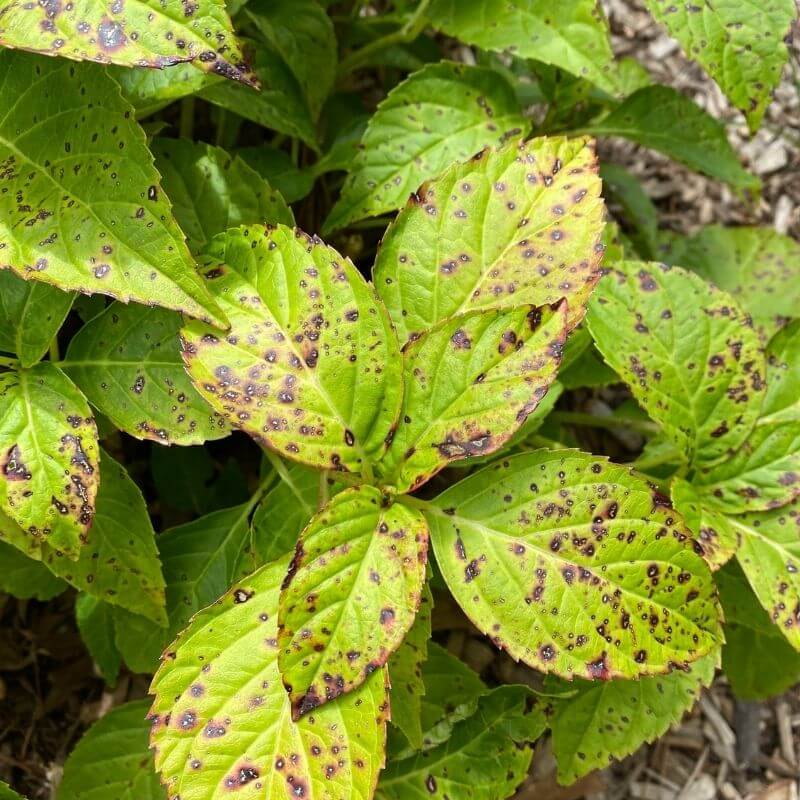Not known Facts About Hydrangea Leaves Turning Yellow
Table of ContentsAbout Hydrangea Leaves Turning YellowThe Facts About Hydrangea Leaves Turning Yellow RevealedSome Known Factual Statements About Hydrangea Leaves Turning Yellow The Best Strategy To Use For Hydrangea Leaves Turning Yellow
One opportunity is that the plant is not obtaining adequate sunshine. Throughout the winter season, the days are much shorter, and the sunlight is not as extreme, so ensure to put your Hydrangea in a place where it will certainly access least six hours of sunshine every day. One more reason for Hydrangea yellow leaves in winter season might be way too much water.Finally, the fallen leaves may be transforming yellow as a result of temperature level stress. Hydrangeas like cooler temperature levels, so if the plant remains in a place that obtains as well warm or also cold, the leaves will turn yellow. If you assume temperature stress may be the concern, attempt moving your Hydrangea to a different location or shielding it from the elements with a burlap wrap.
New growth will be observed in very early springtime, when you'll notice environment-friendly foliage sprouting from stems that could have shown up dead. Nonetheless, if your fallen leaves are transforming brown in spring or summer season, there are likely various other aspects at play. The accurate factors rely on the selection and their growing conditions, yet generally, brownish hydrangea fallen leaves signify dehydration and wilting in the warm
In the springtime when the mercury stays fairly reduced, they'll do fine. When points warm up over the summer nevertheless, time spent in the very early afternoon rays can cause unimaginable damage.: Expand your hydrangeas in a spot where they'll obtain sunshine in the early mornings or nights, however not during the peak hours.
Rumored Buzz on Hydrangea Leaves Turning Yellow
Wilting is created by lack of dampness, meaning there are a few excellent techniques to utilize to avoid this from happening. Give your hydrangeas a healthy glug of water every few days when the temperature levels are climbing up high, and deal with the dirt to better preserve dampness. After sprinkling, a dab of mulch around the base of each plant ought to aid with this by maintaining wetness in the dirt.
This interrupts fungi spores from working out. "The Botrytis fungus prospers in great and wet conditions, so avoid showering the entire plant when sprinkling and simply water at the origins," shares Roy Nicol, a Master Gardener - Hydrangea Leaves Turning Yellow. If you've missed out on the possibility for prevention and are managing an infection you must get rid of all dead or seriously infected fallen leaves from the plant and ruin them to avoid further spread
As a general general rule, we recommend getting rid of leaves when they are 50% brownish or higher. While browning brought on by any kind of reason can not be turned around, taking the rehabilitative action explained above will certainly urge the plant to grow brand-new fallen leaves so the harmed leaves either diminish normally or can be gotten rid of by the garden enthusiast.
Hydrangeas need to be sprinkled only when the leading couple of inches of soil are completely dry, and ought to be provided a detailed soaking each time. Underwatered hydrangeas are this link likely to have yellow, wilting, and sagging fallen leaves.
Hydrangea Leaves Turning Yellow Fundamentals Explained
The way you fix hydrangea leaves turning yellow depends on the key concern triggering the yellow fallen leaves. This can be difficult to determine, but when you do you will have the ability to change your plant treatment accordingly to deal with the issue. As stated in the past, a common problem with hydrangeas is nutrition deficiencies.
During the top expanding period, you must sprinkle at a rate of about 1 inch per week. If you are fretted concerning not properly watering your hydrangeas, there are a number of points you can do. Including mulch to the base of the plants over the root area assistance to control the temperature around the hedge and maintain water in the soil.

If it is as well serious, some plants will never recover from Going Here transplant shock and will certainly remain to decline up until they die. Decrease transplant shock by consisting of as numerous roots as possible when excavating up your plant to move it. Make sure to give more water than typical in the weeks complying with growing to aid your plant recover and expand new roots.
The Facts About Hydrangea Leaves Turning Yellow Uncovered
To stay clear of spreading out fungal illness, make sure to thouroughly clean and decontaminate any pruning devices before and after use. Lastly, you can try to purge the roots with water to remove excess fertlizer.

If you don't water your hydrangea plant for even more than a week, the fallen leaves will start turning yellow. Fungal conditions that assault the plants tend to show signs on the roots and the leaves of the plant. Among these diseases is origin rot, which makes it hard check out here for the plant to feed correctly.
Root rot happens when virus take up the origin cells as hosts and stop the cell from functioning. Otherwise dealt with, this illness can ultimately result in the plant passing away. Leaf place is an additional fungal illness that can target hydrangea. It results in the fallen leaves turning yellow and the appearance of brownish and purple areas on the fallen leaves.